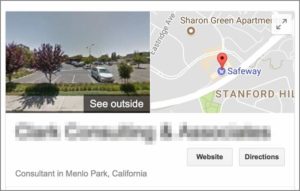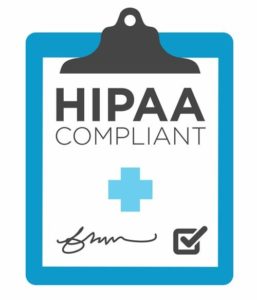
Everyone wants to land on page 1 of a search result. And even better, to have photos and other visually juicy eye candy that draws attention to your listing over anyone else’s. Google now lets you do that, no charge, with the Google Business Profile.
The Google Business Profile (GBP)
Have you ever noticed that some searches deliver a side panel with photos, hours of operation, and reviews and star ratings? This is the Google Business Profile where your business is writ large and colorfully. It does attract a lot of attention—and clicks. Think of the Google Business Profile as the equivalent of a business Facebook page. But it’s not a page with its own URL that the public visits directly. It only comes up on search results pages if Google thinks there’s a match based on the search term or phrase entered.
Multiple online references to you
There can be lots of different Web pages that make reference to your company (Facebook, Yelp, LinkedIn, your own website). You probably have only one company website, but you may have started and abandoned a few Facebook pages, perhaps a LinkedIn page or two. Your company name may have started with “The” in front, and then over time you stripped that out for simplicity’s sake. You may have moved, but a directory listing from long ago never got updated so it’s showing your old address. And you may be listed on directories you never intended to be listed on! (Plenty of websites will grab links and assemble information without asking the company owners. Usually it’s a good thing to have many links. But in this case it can backfire on you.) From the perspective of the automated search robots (“bots”) that index the Web, your online identity could be muddy indeed.
Google also wants to discourage promotion of here-today, gone-tomorrow scammers. They want a brick and mortar location to be tied to your business, even if it’s not published information. For instance, PO boxes are not allowed for your address.
The verification process
They will go through several processes to be sure that they have the most up-to-date NAP for your business. Google uses snail mail to send a postcard to your brick and mortar address. It will have a code that you enter as part of the verification process to prove you are you and that your business is indeed where you say it is. Depending on their findings, you may also have to go through and clean up out-of-date directory listings and officially delete any duplicate Facebook or LinkedIn pages. Sometimes they decide they want a video verification, where you do a walk through of your office to show them your address, your sign, obvious business equipment, your city business license, etc.
Best use of photos
More to the point, you can display wonderful photos of your staff and/or people working with elders. This is your opportunity to introduce images that project the warmth and caring of your service. Happy and kind photos jump out on the normally boring, text-heavy search result page. There’s no charge for photos, so put in a lot. Other than an accurate NAP, it’s the single most important thing you can do to boost your visibility.
Want help with your Google Business Profile?
We offer Google Services for clients who license our content resources or have us build their actual website. To learn more, give us a call at 707-477-0700 (Pacific) or email helpyougrow@elderpagesonline.com


 Accuracy = Visibility
Accuracy = Visibility The NAP: The key to your identity
The NAP: The key to your identity Photos of your location
Photos of your location A cautionary note about HIPAA
A cautionary note about HIPAA